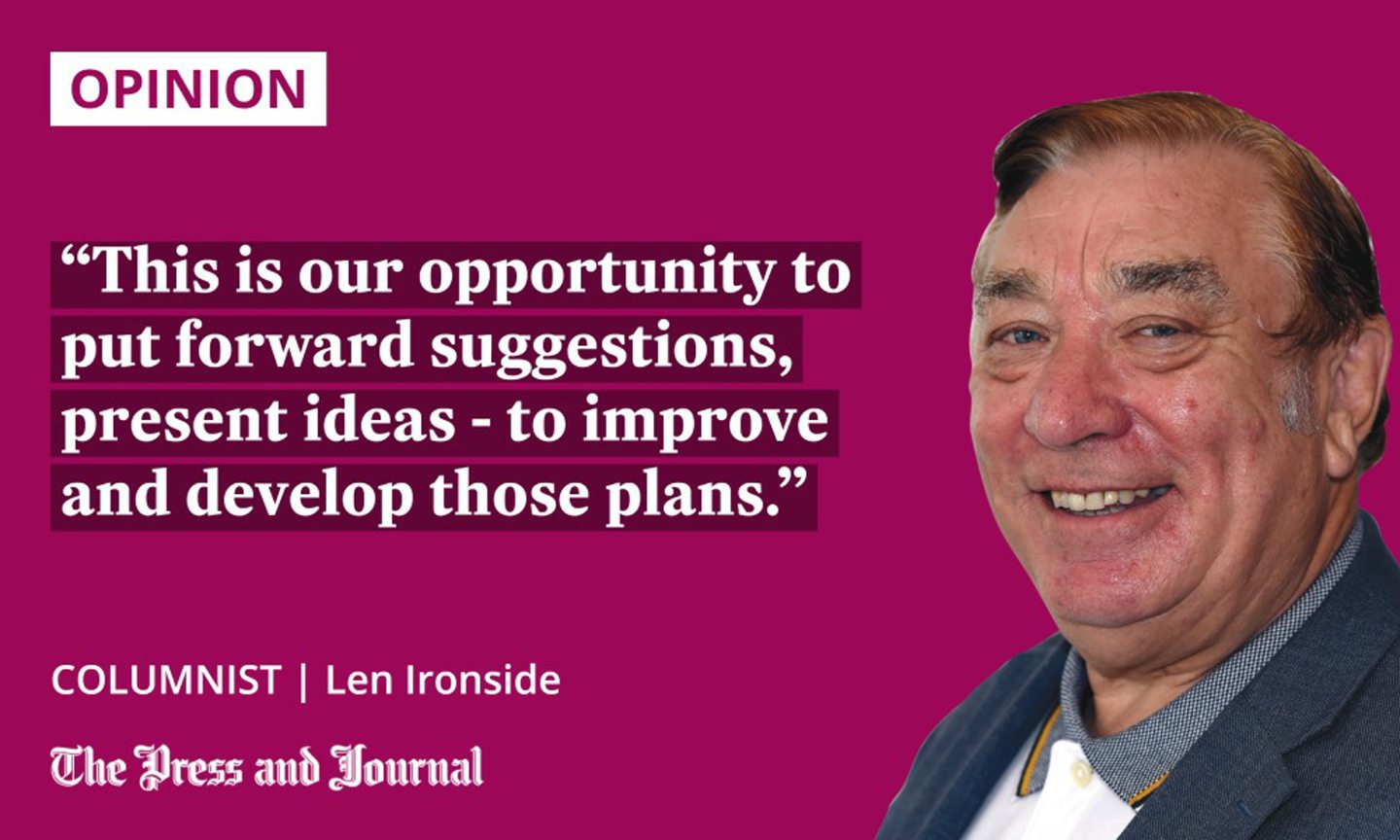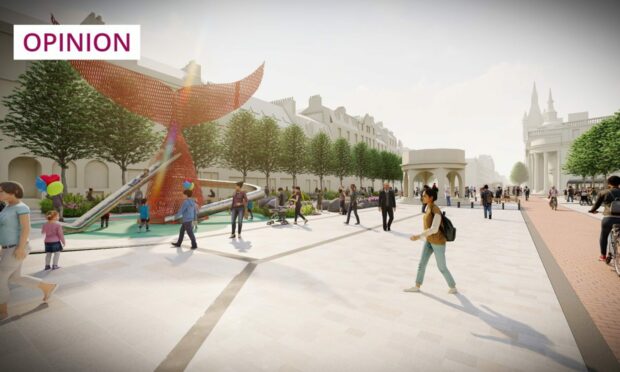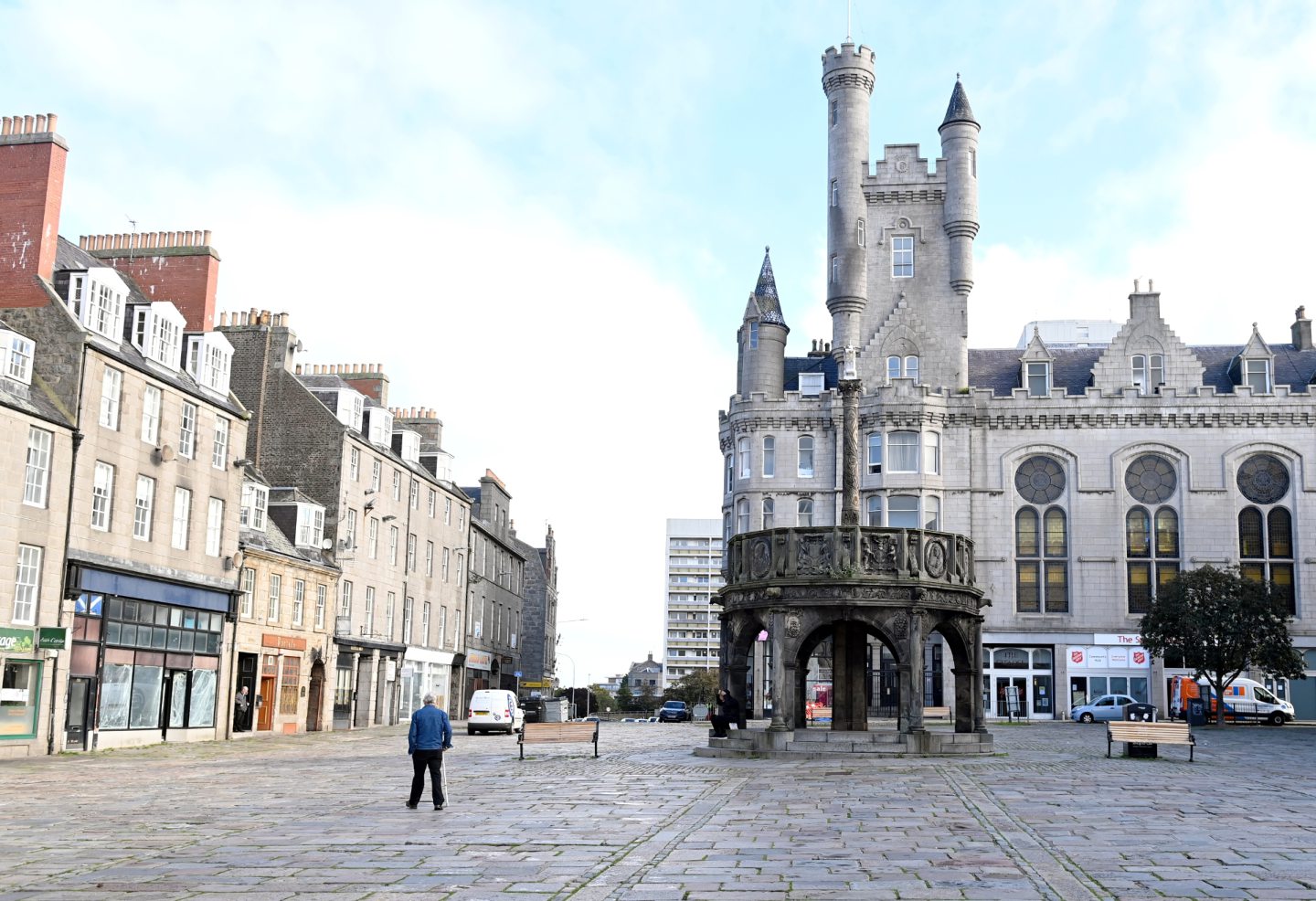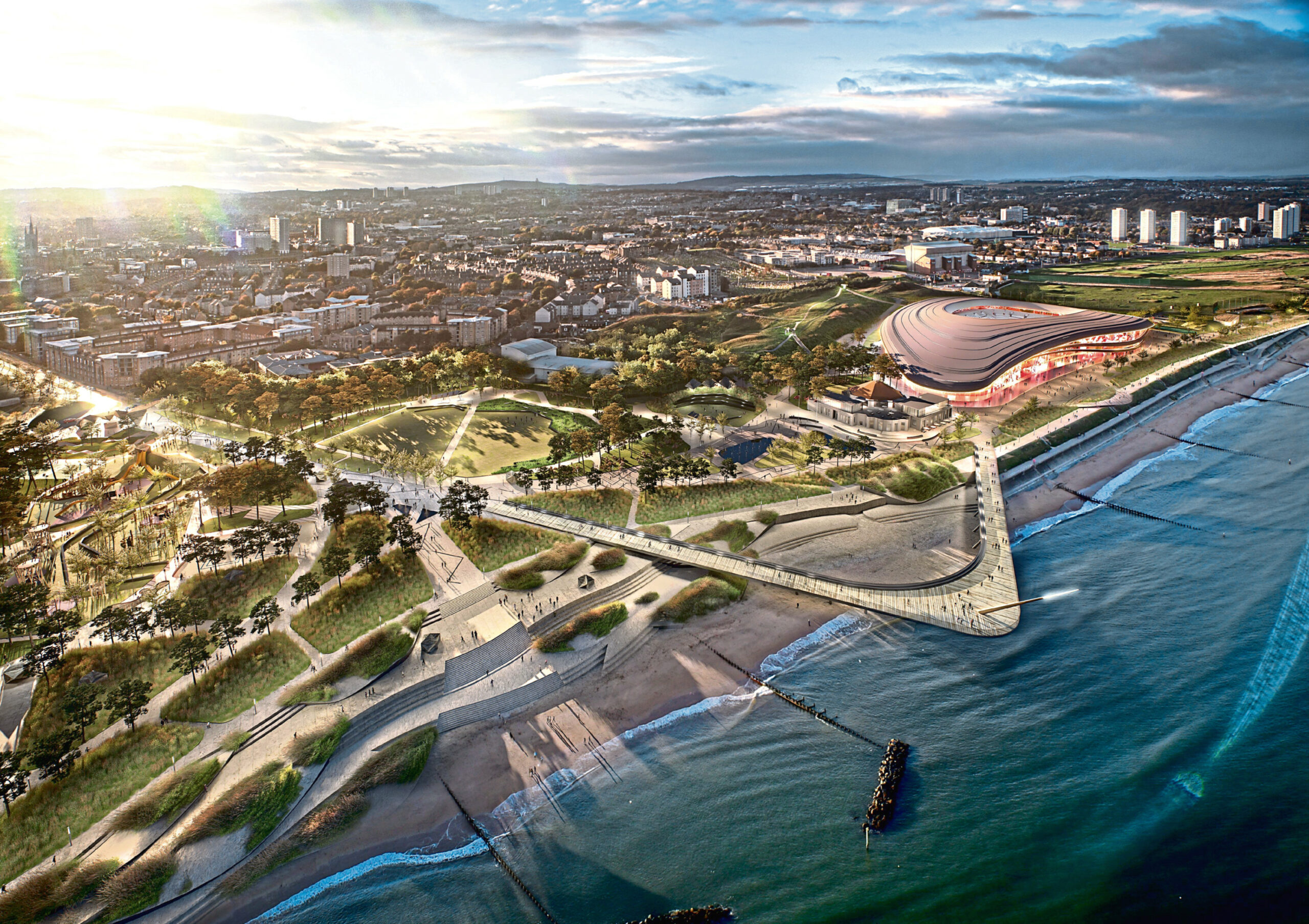Aberdeen is the third largest city in Scotland. It’s a great place for quality of living.
But, in recent times, the city has been on its knees. Even before the cost of living crisis, things were looking bad. The slow recovery from Covid-19 hasn’t helped.
I was intrigued by the Aberdeen masterplan. Whether you like it or not, it’s a progressive attempt to reinvigorate our tired city.
Something has to be done. We cannot constantly resist any change if we are to reinvigorate and, once again, become a vibrant, progressive place.

Tourism is one of the best ways forward, with attractions like the Art Gallery, Torry’s Greyhope Bay dolphin-spotting cafe, harbour boat tours, the Science Centre, our world-class P&J Live venue which can host any large-scale event, and some interesting small shopping units in likes of Chapel Street. Clearly, we have much to build on.
There will always be those who oppose any changes, and I remember the small but vocal group who tried to stop the Marischal Square redevelopment. Now, people enjoy sipping their coffees, eating tasty, quality meals, and letting their children enjoy running through the little fountains there.
Similarly, several years ago, when the council was looking to add an extension to His Majesty’s Theatre, there was resistance, all because it was proposed to use glass, not granite, which would have to have been imported.
As council leader, I was both determined and persistent. HMT has a unique place in our history, and that was worth preserving.
I set about seeking funding from the Scottish Government and the Scottish Arts Council. They accepted my presentations, and now we have a theatre which visiting performers love because there is adequate room to rehearse, access for people with disabilities, and availability for local groups to use the space.
Time to raise concerns and ask questions
Now, with the city and beachfront masterplan on display, local people will have their chance to raise questions and provide comments which can directly influence the development.
Cyclists need their own road space, protected from heavier traffic, and allowing unimpeded bus movement
Residents will want to know where the traffic will flow and what will be pedestrianised. Currently, there is poor enforcement of parking in pedestrianised areas like Little Belmont Street, Back Wynd, Upperkirkgate and outside John Lewis and the Bon Accord centre.
Will the Castlegate be reopened? Should traffic be allowed on the beachfront? What is the future of the cobbles? Are there to be more bus gates?
The cycling lobby have already raised their concerns. When I say “the cycling lobby”, I am referring to properly trained cyclists who know the rules of the road – not the casual user who simply buys or is given a bicycle and creates problems by illegally using the pavements. They are a menace to people with visual or hearing impairments, along with other pedestrians.
When the bus lanes were created, cyclists were allowed to use them. However, that is no longer viable in today’s world, where using the bus is meant to be a faster way through city traffic. Given the aggressive driving, cyclists need their own road space, protected from heavier traffic, and allowing unimpeded bus movement.
The issue of electric scooters must also be addressed before they start forcing pedestrians off the pavements.
Change presents a huge opportunity
Unfortunately, in Aberdeen, we have a history of objecting to any changes being proposed. This has resulted in the failure to build an oil experience centre or an undersea visitor attraction, a lack of rail links to the airport, and no central transport hub.
So, time to get out of your armchairs and become proactive
And, even when I reached an agreement with the then first minister, Jack McConnell, to produce and fund a western peripheral route in 2003, the road building was delayed by eight years due to public protest. In other parts of Scotland, when new exciting proposals come forward, locals are clamouring for them to succeed.
Well, now is our chance. The masterplan and beachfront proposals are before us. This is our opportunity to put forward suggestions, present ideas – to improve and develop those plans.
Be bold and raise the questions that you have. There is very often a discrepancy between development plans on paper and the reality of practical development on the ground.
It’s also very important to discuss and consider the needs of the disabled community. The range of the term “disability” is very wide and, therefore, needs careful consideration. The views of people with disabilities are paramount in any consultation and must be acted upon before any implementation.
I’m proud of Aberdeen. I want to see visitors come here and enjoy our exciting and forward-thinking city, and that’s before they get to the beautiful scenery and attractions of the shire.
So, time to get out of your armchairs and become proactive. Raise your concerns with your local councillor, and help improve and shape the future of our great city.
Len Ironside CBE is a former champion wrestler who served as an Aberdeen councillor for 35 years, with four years as council leader




Conversation